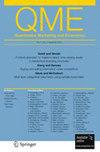与下游竞争对手签订合同
IF 1.1
4区 管理学
Q3 BUSINESS
引用次数: 0
摘要
作为一种排他性手段,捆绑合同经常受到审查。一级市场上的垄断者可以利用这种合同排除二级市场上效率更高的竞争对手。当公司通过竞争零售商销售时,杠杆公司可以向零售商提供捆绑合同,诱使他们完全从它那里购买初级和次级产品,从而将竞争对手排除在外。我们考察了在不同的条件下(i)上游企业承诺价格的能力和(ii)下游零售商之间的竞争,这种捆绑合同对现有企业是否有利可图。我们表明,当零售商在价格上竞争时,无论进入者是否能够承诺自己的价格,当在位者能够(不能够)承诺价格时,排他性的捆绑策略对在位者来说是有利可图的(不有利可图)。然而,当零售商在数量上竞争时,进入者的承诺能力确实很重要。具体来说,当两个上游公司都能够根据新进入者的成本优势程度承诺各自的价格时,排他性的捆绑策略(i)可能对在位者无利可图;(ii)当只有它能承诺其价格时,它总是有利可图的;(3)当上游公司都不能承诺价格时,则无利可图。我们的结果延伸到产品互补或替代的情况下,零售商可能在本质上是不对称的。本文章由计算机程序翻译,如有差异,请以英文原文为准。
Tie-in contracts with downstream competition
A tie-in contract has frequently come under scrutiny for its role as an exclusionary device. A firm that is a monopolist in a primary market can utilize such contracts to exclude a more efficient rival in a secondary market. When the firms sell through competing retailers, the leveraging firm may offer tie-in contracts to the retailers inducing them to purchase both primary and secondary products entirely from it such that the rival is excluded. We examine whether such tie-in contracts are profitable for an incumbent firm under different conditions of (i) the ability to commit to prices by the upstream firms and (ii) downstream competition among the retailers. We show that when retailers compete in prices, then regardless of whether the entrant is able to commit to its own prices, an exclusionary tie-in strategy is profitable (not profitable) for the incumbent when it is able (unable) to commit to prices. However, when retailers compete in quantities, the entrant’s commitment ability does matter. Specifically, an exclusionary tie-in strategy (i) may be unprofitable for an incumbent when both upstream firms are able to commit to their prices, depending on the degree of cost advantage of the entrant; (ii) is always profitable when it alone can commit to its price; and (iii) is unprofitable when both upstream firms cannot commit to their prices. Our results extend to situations where the products are complementary or substitutes and where the retailers may be asymmetric in nature.
求助全文
通过发布文献求助,成功后即可免费获取论文全文。
去求助
来源期刊

Qme-Quantitative Marketing and Economics
Multiple-
CiteScore
2.30
自引率
10.50%
发文量
13
期刊介绍:
Quantitative Marketing and Economics (QME) publishes research in the intersection of Marketing, Economics and Statistics. Our focus is on important applied problems of relevance to marketing using a quantitative approach. We define marketing broadly as the study of the interface between firms, competitors and consumers. This includes but is not limited to consumer preferences, consumer demand and decision-making, strategic interaction of firms, pricing, promotion, targeting, product design/positioning, and channel issues. We embrace a wide variety of research methods including applied economic theory, econometrics and statistical methods. Empirical research using primary, secondary or experimental data is also encouraged. Officially cited as: Quant Mark Econ
 求助内容:
求助内容: 应助结果提醒方式:
应助结果提醒方式:


